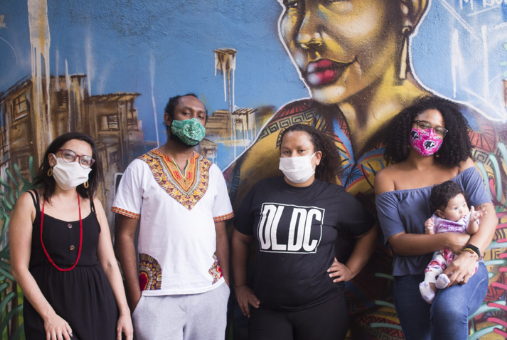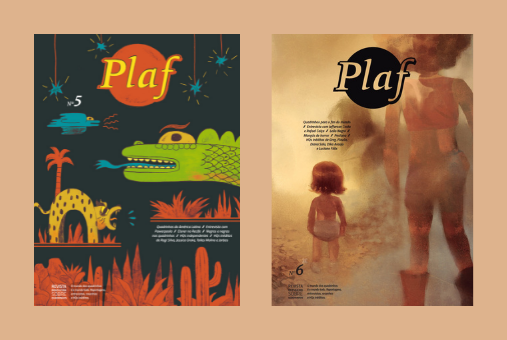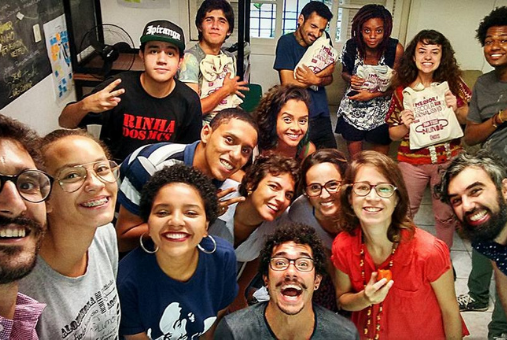Created as a blog in 2013, Desenrola e Não Me Enrola (Unwind and Don't Wind Me Up) currently has a fixed team of six people and ten employees who publish 20 articles per month for an audience of 20,000 users. In addition, it has already collaborated in the training of 300 journalists and community communicators and maintains a media center with infrastructure for popular communicators, such as equipment, a studio and a coworking space.
But, despite the relevance and high level of quality of its journalistic production, Desenrola suffers from what is the greatest challenge for any media outlet, large or small: the scarcity of resources. It’s an even greater challenge for new and small outlets that are just starting out, without access to traditional means of financing, such as investments and credit, or even the technical capacity to invest time and resources in the development of products and new business models.
Facing this, an opportunity arose in a loophole found in Brazilian legislation to incentivize culture, which finances, through public and private resources, the production of activities such as cinema, theater and concerts. In 2014, Desenrola signed up a project and won the first edition of VAI, the Program for the Valorization of Cultural Initiatives in the city of São Paulo, and received R $29,000 (USD $8,648 at the time) for the first edition of Você Repórter da Periferia (You, reporter from the periphery).

Part of the permanent team of Desenrola and Não Me Enrola: public calls for grants ensured the publication's survival and expansion. (Courtesy)
“We managed to complete the seven months of our training program and were able to access the main equipment we use to date, such as a DSLR camera, which is a T4I [type of camera]. We were able to buy a microphone, a good quality recorder that records on two channels, a good computer for video and photo editing, and also for handling animation equipment,” Ronaldo Matos, co-founder and editor of Desenrola, told LatAm Journalism Review (LJR). "All the journalistic coverage of the young people trained by the program, all the production of written and video reports, were carried out at cultural events in the periphery of São Paulo."
After this first public call for grants, others came, such as the VAI in 2015, which resulted in R$ 31,000 (USD $9,300), and the Law for the Promotion of Culture in the Periphery, also in the city of São Paulo, in 2017 , which guaranteed Desenrola R $300,000 (USD $94,000). The resources were invested in training, infrastructure and in the construction of the M’Boi Mirim Media Center, with a multimedia studio, auditorium and meeting space. In addition, it allowed for the professionalization of the team.
The site is a reference in the coverage of the periphery of the city of São Paulo from the point of view of those who live in them. During the COVID-19 pandemic, Desenrola published the series of reports “Cidades dos Direitos Invisíveis” (Cities of Invisible Rights), recognized in 2020 by Article 19 in the #ShareInformation #ShareHealth Campaign, which honored initiatives that were producing and distributing content to combat disinformation related to the pandemic.
“I'll be very honest: we wouldn't exist [without the call for grants]. We do not have the financial resources to invest in our own activities. We have the will, professional qualifications, and our differential is doing journalistic work in peripheral territories. [But], at crunch time, this is still valued very little in the professional scope of journalism in Brazil. So we wouldn't be able to exist to this point if it weren't for these calls for grants that we have accessed throughout our history,” Matos said.
Promoting journalism via calls for grants for cultural projects: a workaround
In Brazil, the federal government, states and municipalities have specific legislation for financing cultural activities, such as audiovisual productions, theater and concerts, which guarantee public and private resources, through tax incentives, to cultural producers. As in other areas of the economy, state action serves to support a market considered strategic.
Journalism is not specified as one of these cultural activities, although, like Desenrola, other Brazilian outlets are also taking advantage of loopholes in the legislation to seek funding and, at the same time, demand the creation of specific policies for the sector.
In the state of Rio Grande do Sul, in southern Brazil, Nonada is a digital magazine that covers culture with an investigative footprint, monitoring the application of public resources in the area. The outlet is financed through crowdfunding and a content production agency. The calls for grants entered the equation after the pandemic and financed a print edition of the magazine, a special project on the languages spoken in the state and another on cases of censorship of artists in Brazil. In all, it was R $60,000 (USD $12,000).
“[The calls for grants] helped to promote and maintain our work during the pandemic, so that we could invest more in our journalism, and do stories of public interest. … We have a small team, so we manage to organize ourselves with this amount. You can't make a living from it. But it gives us a breather to survive,” Rafael Glória, founder and editor of Nonada, told LJR.

Covers of issues 5 and 6 of Plaf magazine (by O Grito!): private financing after four issues with public resources. (Courtesy)
Similarly, the magazine O Grito!, from the state of Pernambuco, in northeastern Brazil, uses resources obtained through calls for grants for cultural projects to finance part of its operations. The digital magazine is 12 years old and covers the arts, mainly music and comics. Since 2017, O Grito! has been awarded resources from Funcultura, from the state government.
“It is a law, guaranteed independently of the government, to support the state's culture. ... We make a journalistic product [to cover] that cultural event [targeted by the call for grants]. We defend that the journalistic product is essential for the sustainability of that activity,” Paulo Floro, editor of the magazine, told LJR.
In one of these calls for grants ,O Grito! took the opportunity to create a print magazine dedicated to the coverage of comics, Plaf. The original resource provided for four editions, but the magazine has already published another two with resources obtained from other sources.
“When you have a project approved [in a call for grants], it ends up contributing to financial health as a whole. You have the possibility to hire professionals. Or you have the opportunity to create an innovation that you had already planned but didn't have the resources to do. It increases the impact, the audience and helps us to attract sponsorship for other products,” Floro said. “The call for grants is not an award, it is a public resource. You need to be accountable. You execute the project. ... It's uncertain, it's a contest.”
Defense of public policies to promote journalism
Énois describes itself as a laboratory with the mission of promoting diversity, representativeness and inclusion in Brazilian journalism. For 12 years, it has worked not only in the production and distribution of news about the periphery, but also maps journalistic initiatives (and the lack of them), trains professionals and systematizes processes that guarantee the sustainability of these organizations.
“Over time, we've counted 14 different ways to earn money. I love incentive laws. Because they are black boxes we really need to talk about,” Amanda Rahra, institutional director and fundraising manager at Énois, told LJR. According to her, the culture incentive laws currently fund 50 percent of the organization's annual budget, of R $2 million (USD $370,000).
“We've already had a provocation: 'ah, you keep stealing money from the culture.’ Well then, we don't have a journalism call for grants. And the culture of information, the culture of journalistic production, for me is a crucial point in the culture of a country. It's representativeness, it's inclusion, it's diversity. Journalism fosters this. Or not, depending on how it acts,” Rahra said.
Rahra defends the existence of specific public calls for grants for financing journalistic activities, “that would make us reflect on journalistic issues, in the context of project development, journalistic dissemination. There are really cool things to discuss and delve into, instead of trying to get caught up in the culture.”

Énois School of Journalism: the first class financed by an incentive law. (Courtesy)
The money for this could come through a bill, currently in the Brazilian Congress, which taxes technology platforms on profits obtained from the reproduction of news content and redistributes these resources to journalistic organizations. The National Federation of Journalists (Fenaj), on the other hand, defends that this money should feed a public fund destined to foster local journalism and mitigate news deserts in the country.
For Professor Rogério Christofoletti, responsible for the Journalistic Ethics Observatory (Objethos) of the Federal University of Santa Catarina (UFSC), the dispute for public resources for culture is a situation illustrative of the precariousness of forms of public funding for journalism in the country:
“Ideally, we would have calls for grants with public funds aimed at supporting cultural activities [...] and specific calls for mass communication and journalism actions,” Christofoletti told LJR. “The federal government and local governments do not usually issue calls of this type, perhaps because they understand that journalism and communication are functions to be performed by the private sector. It's shortsighted.”